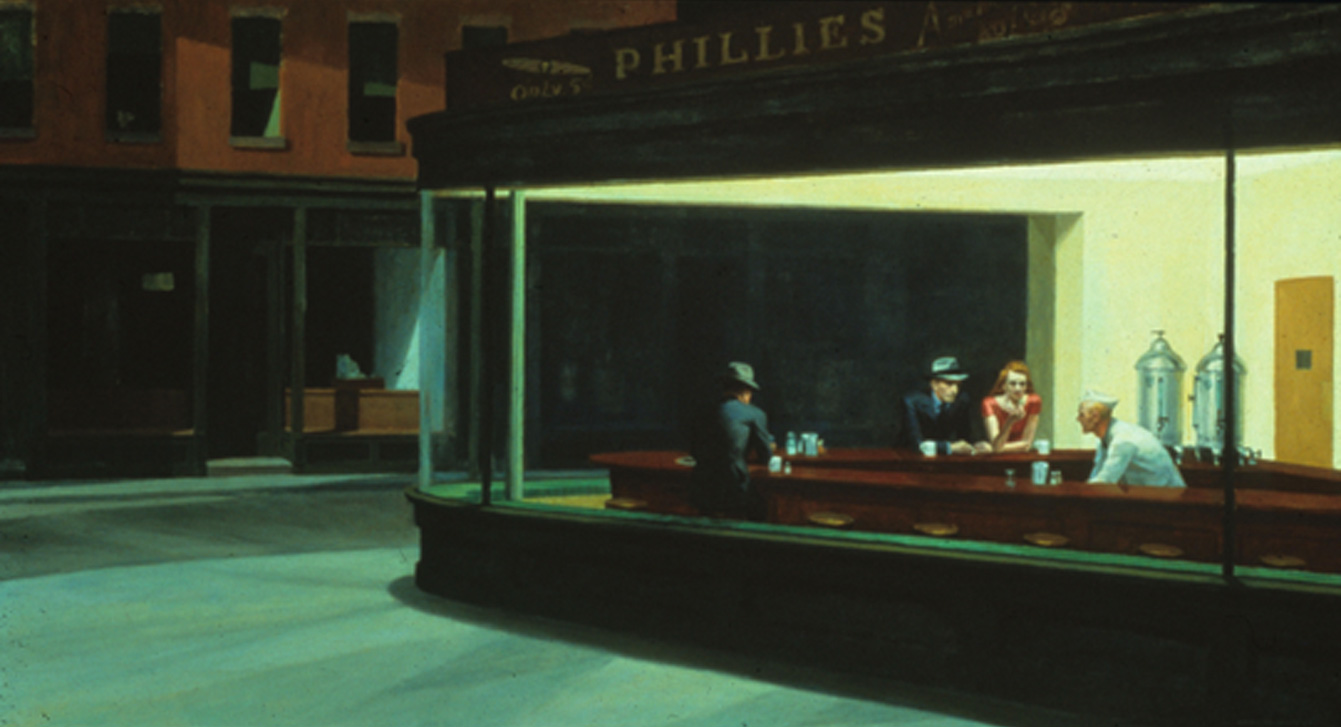
Night Hawks, Edward Hopper, 1942. Oil on canvas, American painter 1882-1967, 19th-20th century, Art Institute of Chicago.
The urbane culture of the twentieth century.
Edward Hopper's paintings best portray the character and qualities of an ever more urban America. By 1920 half the population lived in cities. As the MOMA curators suggest about this wartime painting of "Night Hawks" with its spare bright luncheon counter amidst the otherwise streets of that dark night:
"Fluorescent lights had just come into use in the early 1940s, and the all-night diner emits an eerie glow, like a beacon on the dark street corner. Hopper eliminated any reference to an entrance, and the viewer, drawn to the light, is shut out from the scene by a seamless wedge of glass. The four anonymous and uncommunicative night owls seem as separate and remote from the viewer as they are from one another." [ Entry, Essential Guide, 2013, p. 58.]
Hopper's works do not intentionally reveal the ennui of post-industrial life but he told the Art Institute of Chicago staff:
"unconsciously, probably, I was painting the loneliness of a large city."
He painted, sketched or etched railroads, elevator trains, and highways all features of the urban settings that were the experience of many Americans in the 20th century. Hopper's eye caught the singularity of experiences he beheld in maturing "Lonely House" in 1923, for example catches two children beside the apartment house exploring their immediate terrain or hiding from al but our view of the prospect.
The Lonely House, 1923
See – http://www.artic.edu/aic/collections/artwork/50061?search_no=7&index=27
He painted, Alan Gussow suggests "among the most enduring, hypnotic, and unsentimental images of American places ever made. Contrasting with the archetypal, often more generalized oil paintings, Hopper's watercolors. . . were consistently based on direct observation."
Edward Hopper admitted in a catalogue statement from 1933 that:
"My aim in painting has always been the most exact transcription possible of my most intimate impressions of nature, I have tried to present my sensations in what is the most congenial and impressive form possible to me."
p. 132. Alan Gussow, A Sense of Place: The Artist and The American Land. (1972).
Edward Hopper, 1882-1967.
ennui, a feeling of listlessness and tedium accompanied by lassitude and weariness due to boredom or lethargy.